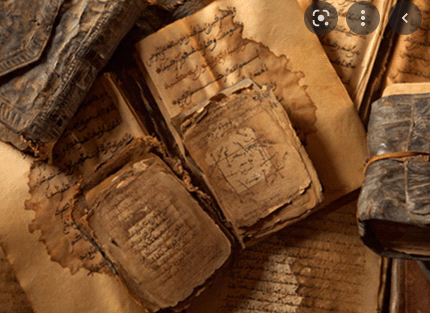
الحمد لله رب العالمين
والصلاة والسلام علي أشرف الأنبياء والمرسلين وعلي آله وصحبه ومن دعي بدعوته واستن بسنته إلا يوم الدين
As already stated our topic today will be on THE ISLAMIC SCIENCES.Alhamdulillaah
We have already taken, as a part of our Daily Posts, some of the importance and merits of Ilm and seeking for it. So, we do not need to return to that.
It is important that we all realise that some of the Ulamaa divide Islamic Sciences into a broad categorization of Seven (7).
I’ll inshaa Allaah make a mention of them here under and then return to them for explanation.
They are:
1. TAWHID
2. QUR’AN
3. HADITH
4. LUGGHA
5 . FIQH
6. TA’RIKH
7. ADAAB
Each of these 7 are very very broad categories of the Islamic Sciences and are subdivided into other areas of the Islamic Sciences. Lets take them one after the other and illustrate the depth of what they entails.
1. TAWHID:
Tawhid is the category of the Islamic Sciences that are studies on the Unity of Allaah and the sort of creed that a Muslim should believe in. Its subdivided into two broadly:
- At-TAWHID Al-Ilmiyy: which encompasses the theoretical aspects of Tawhid and touches on both Tawhid Asmaa’ Wa As-Sifaat and Tawhid Rububiyya.
This Science is known as: ‘Al-Aqeedah’ and - ‘At-Tawhid Al-‘Amaliy’: This science discusses the details of Tawhid Uluhiyyah and the practical aspects of what the Unity of Allah and the belief in Monotheism requires from a Muslim to do of practice.
This science is more often referred to as ‘TAWHID’
2. QUR’AN
Imaam as-Suyuuti in his book Al-Itqaan Fi Ulumi Al-Qur’an divided the Sciences of the Qur’an alone to over 33. But broadly, the scholars divide them into 5:
A. Ilmu At-Tajwid Wa Al-Adaa: the Science of Qur’anic Inflection, Phonetics and Recitation. This is what is mostly referred simply as ‘Tajweed‘
B. Ar-Rasm: this science deals with the aspect of how to write the verses of the Qur’an and how to compose them. This is because Qur’anic Calligraphy/Writing is very much different in its rules from normal calligraphy and Arabic writing. Broadly, its fonts are different and follow a different format.
C. Ulum Al-Qur’an:
This encompasses the general things that we must know about the Qur’an such as what it’s subjects of discussion are, when it was revealed and the circumstances that surround it, and general knowledge about the Qur’an. It is a very very important science/ilm.
D. Ilm Al-Qiraa-aat:
This science teaches us the various styles and methods of reciting the Qur’an in the 10 agreed-upon dialects and tongues in which the Qur’an was revealed. This science is so important that most of the Ulamaa considered a perfection of it a very necessary prerequisite of making a commentary of the Qur’an.
E. Ilmu At-Tafsir:
Its the Science of the Exegesis (Tafsir) of the Qur’an. Contrary to popularly held impressions in this land, Tafsir should not be made but by the highest Islamic Authorities in the society and is not meant to be made except by those highly rooted in Ilm due to its complexities.
3. HADITH:
This is a category that encompasses as many as 4 divisions.
A. Mustalihu Al-Hadith: This Science encompasses an introduction into the Terminologies of Hadith Literature, and general knowledge of the Hadith Literatures that are known
B. Ilmu Ar-Rijaal:
This science is broadly on the knowledge of who the men in the Chains of Transmission (Isnaad) of the ahaadith are and much about their lifetimes and biographies. This is why it is further classified into ‘Al-Jar’hu Wa Al-Ta’dil’ (the Science of dis-countenancing and accrediting the Collectors and transmitters of Hadith) ‘Ar-Rijaal’ (or ‘Rijaal Al-Asaanid’) which is the Science of the Biographies and Lifetimes of all the known men in the Isnaad of Hadith.
That is the texts of the Ahaadith and a collection of the various kinds of it.D. Ash-Shar’hu wa Al-Mushkil:
Inshaa Allaah, We’ll pause here. If there are any questions, let us have them.
Baarakallaahu feekum.
*QUESTION:
Naam, wat about d other types of tawheed.ANSWER:
What we have mentioned is not broadly a division of the kinds of Tawhid but a classification of the Islamic Sciences that have to do with Tawhid. As for what you have raised, it is the duty of the teacher who is responsible for teaching you Tawhid to explain that further and to classify it.
Allaahu A’alam




